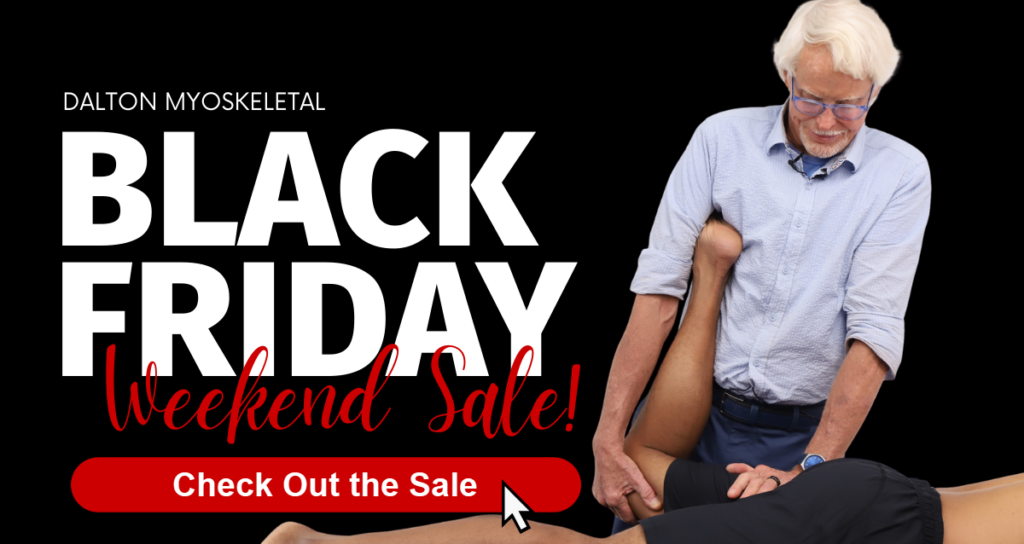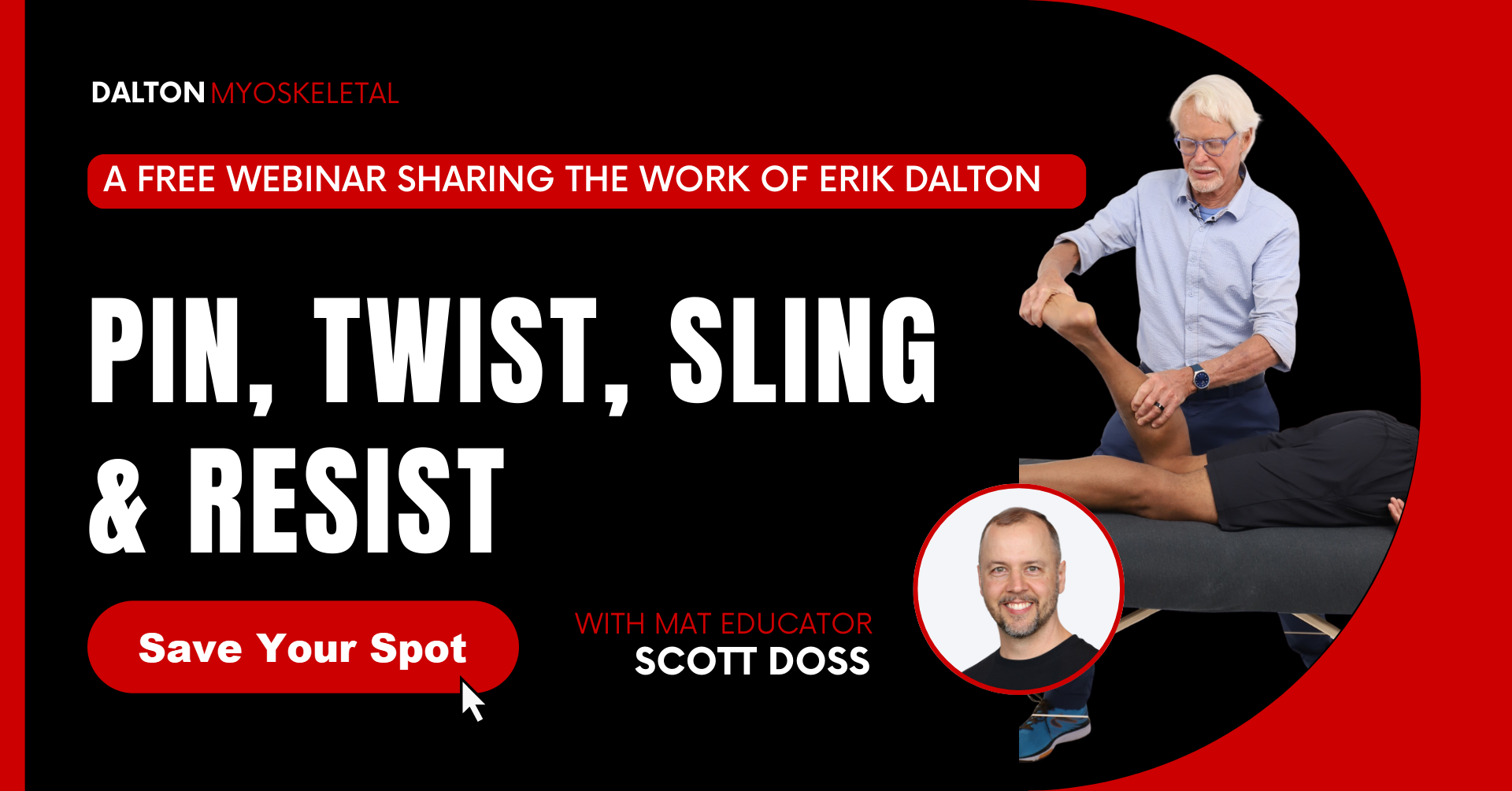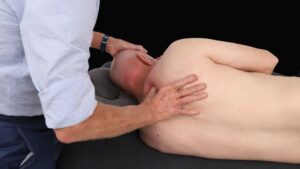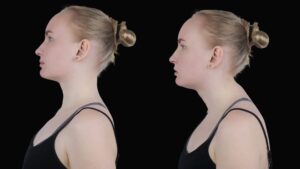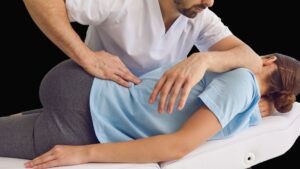In this Technique Tuesday video, Erik Dalton demonstrates several techniques for the neck. These are techniques he often uses for conditions like neurogenic occipital headaches. In these techniques, you’ll notice how Dalton mobilizes both soft tissue, like muscle and fascia, as well as joints. The techniques involve a lot of movement, which in a sense, exposes the nervous system of new ways of moving or operating. After treatment like this, the nervous system has learned that it has choices in the way that it controls and moves the neck. Through this process, the dysfunctional movement patterns that are the root cause of the headache pain are slowly unraveled. The end result is a happy, pain free, and loyal client.
Leveling the Head and Tail
Most massage therapists have made the mistake of chasing pain around a client’s body. One week the client reports that pain arises in the left hip, while the next week, the client reports pain in the right knee. We massage the muscles around the hip, then the muscles around the knee. The pain moves and even changes in intensity, but it doesn’t resolve.
Instead of chasing pain symptoms, we should “level the head and the tail.” When we level the head and tail, we balance the head on the neck and the pelvis on the legs. This practice addresses the root of the client’s pain pattern because it corrects imbalances from anatomical asymmetry.
No person is entirely symmetrical. From birth, most of us express one-sided motor dominance. For example, look at yourself in a full-length mirror. If you’re right-side dominant, you’ll see that the toes of your right foot turn out more than the toes of your left foot. Your right shoulder is probably lower than your left, and your body is rotated slightly to the left. You know this because you see more of the back of your right hand.
In addition to motor dominance, injuries cause asymmetry because they drive us to alter how we move to minimize our pain and prevent further injury. Similarly, habitual activities like sitting hunched at a computer for long hours or carrying a heavy bag over one shoulder lead to uneven weight distribution and misalignment throughout our musculoskeletal system.
Muscle guarding and aberrant postural patterns become entrenched in the nervous system, where spinal cord reflexes instigate changes to the midbrain and cause compensations up and down the kinetic chain. Instead of correcting faulty posture, the brain begins to see abnormal muscle tension and postural adjustments as normal. The body does its best to adapt and will even remodel bones in response to unusual stresses.
Some people adapt to postural changes without experiencing pain or discomfort. Most people, however, develop pain patterns that persist until something intervenes. Methods that level the head and tail help rebalance the body and retrain the nervous system.
A Level Head
The brain wants the head to sit on an even platform to allow maximum head-on-neck rotation. Scientists believe that this helped us to track prey more effectively. Although in this modern world few of us need to track prey, a level head is still necessary. When the head is poorly aligned, the brain tries to compensate. As a result, some muscles overwork while others turn off, creating and continuing a cycle of tension, pain, weak posture, and reduced mobility.
Massage therapists are often quick to address head tilts, rotations, and head-forward postures by applying deep massage to hypertonic or shortened cervical muscles.
While such methods have their place, let’s first use gentle mobilizations on the joints of the cervical vertebrae. Mobilizations (not thrust adjustments) capture the brain’s attention by introducing novel stimuli that help reset faulty nervous system responses. Soon the body enjoys the movement and releases protective guarding. Passive, active, and resisted movement, nerve flossing, and muscle spindle stimulation reprogram the nervous system and allow a return to balance.

A Level Tail
Just like the head needs to sit on a level platform, so does the spine. Leveling the tail refers to creating a level sacral base.
Motor dominance, leg-length discrepancies, poor posture, sitting for long periods, and other factors that cause pelvic tilts and rotations lead to a sacral base that’s off-kilter. Consider the rectus femoris, for example. Because of its attachments to the anterior inferior iliac spine (AIIS) shortness or tightness in this muscle may lead to lumbopelvic distortions. A shortened or hypertonic rectus femoris can tug on the ilia, creating torsional forces that anteriorly rotate the ipsilateral pelvic bowl. Unilateral shortening of the rectus femoris results in anterior rotation of one ilium, whereas bilateral contraction produces increased lumbar lordosis and lumbosacral angle.
Our initial impulse might be deep work on the rectus femoris and iliopsoas. Instead, let’s use some Myoskeletal Alignment Techniques, or more specifically, graded-exposure stretching to reduce muscle tension and balance the innominates.
In Myoskeletal Alignment Techniques, we often choose movement first. This is because we want to expose the nervous system to new movement possibilities and reduce the threat of pain. When the body feels safe to move, it down-regulates sympathetic nervous system activity and drops protective muscle guarding. We can use deep friction if necessary, but we are just as likely to apply muscle spindle activation techniques to wake up inhibited muscles and nerve flossing to free trapped nerves.
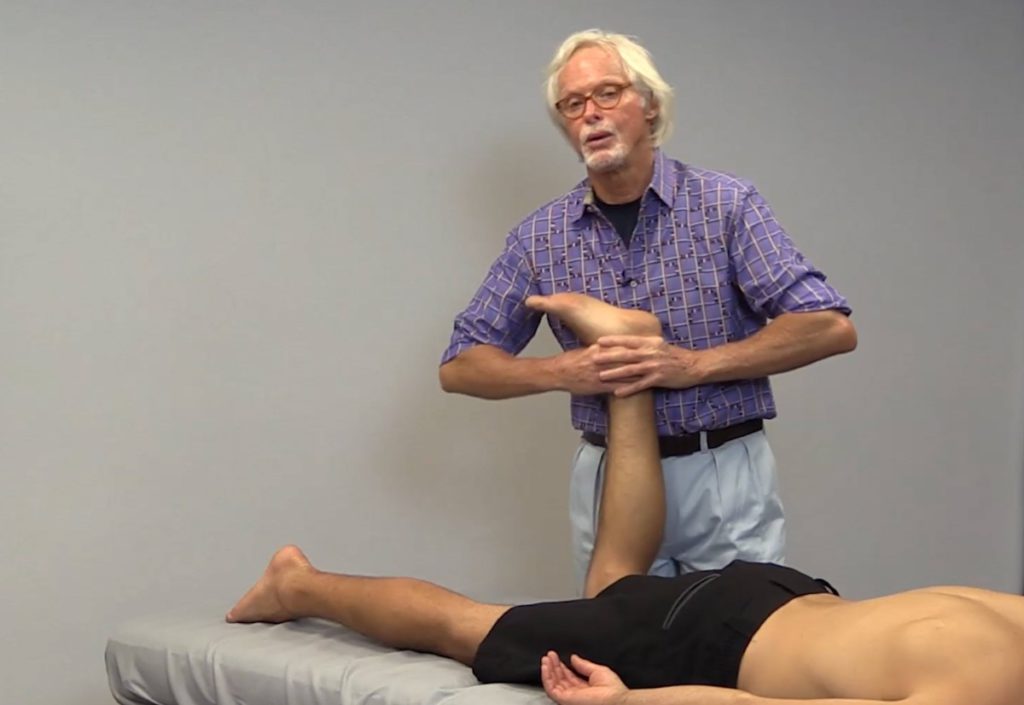
In summary, the next time you see a client with unresolved pain, don’t chase their symptoms around their body. Instead, assess the position of the client’s head and tail. Resist the impulse to drop your elbow into hypertonic muscle. First, use passive, active, and resisted movement to engage the brain and down-regulate the sympathetic nervous system. You may find the body does your work for you, and you can put your elbow away. By focusing on the levelness of the head and tail and by choosing movement first, we help retrain the nervous system, and stop chasing pain.
